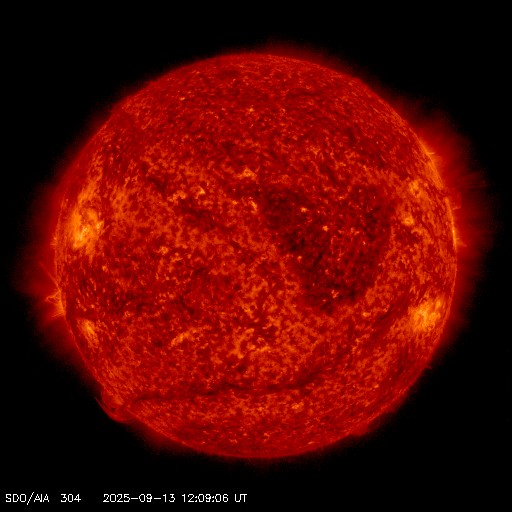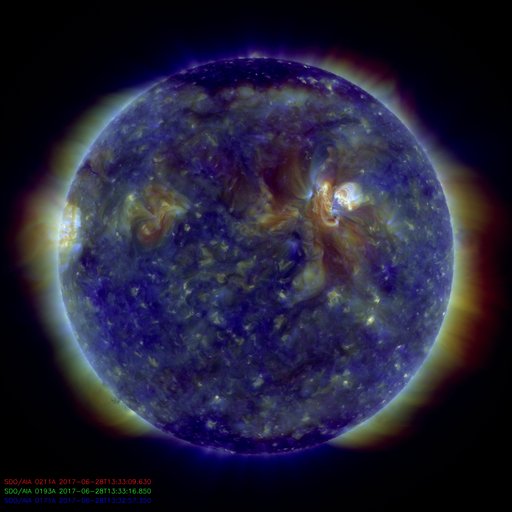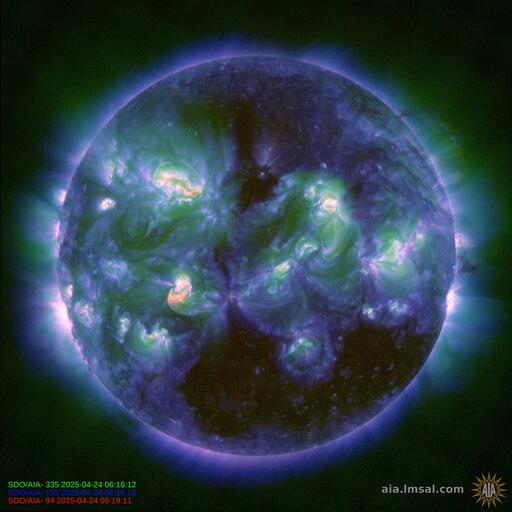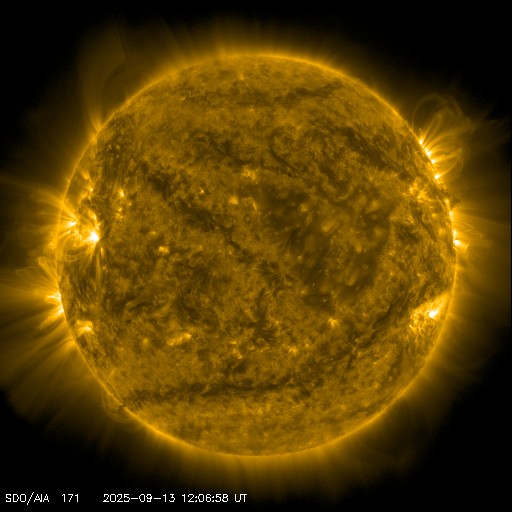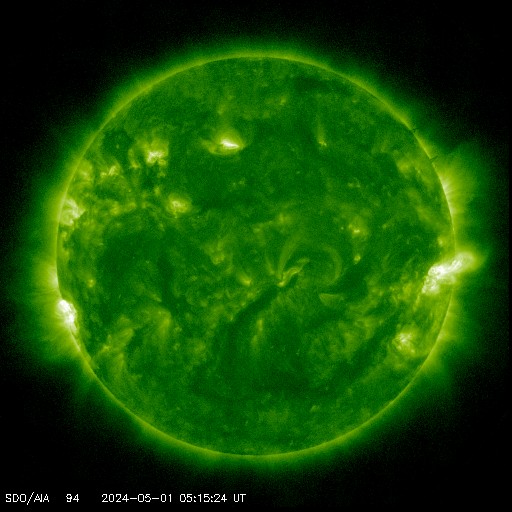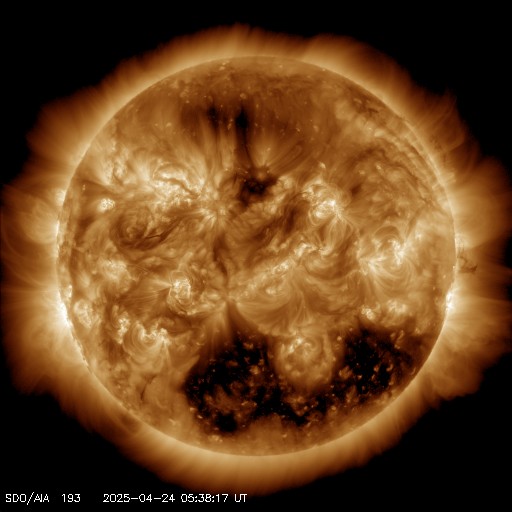Updated @ 19:05 UTC June 13, 2012:
June 13, 2012 at 13:10 UTC Earth facing sunspot region 1504 produced a M1.2 LDE (long duration event) solar flare lasting for around 2hrs. Region 1504 is located in the southern hemisphere of the solar disk and has rotated into a direct Earth facing position. Because of the location of suns 1504, any CME produced by this region would be Earth directed. By looking at STEREO A and B, we can now see that there was a CME (coronal mass ejection) produced in association with today's M1.2 flare.
Check back often for updates for this event.
All updated info will be added below.
Here we can see the size and direction of today's CME as seen on STEREO A. Remember, with STEREO A, Earth is located to the left hand side.

